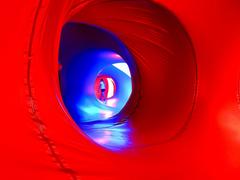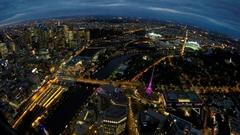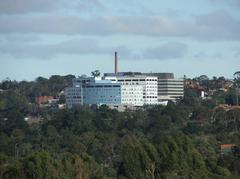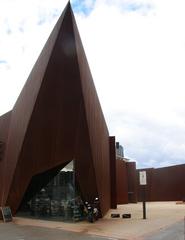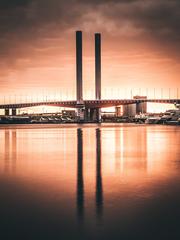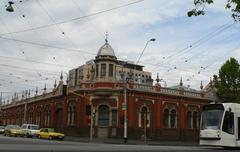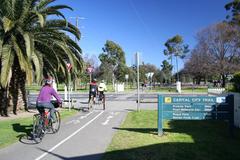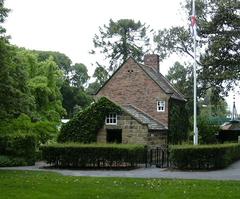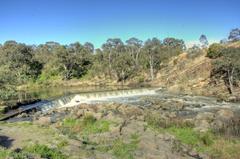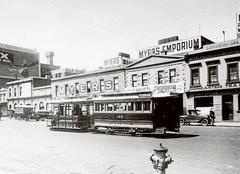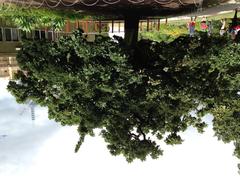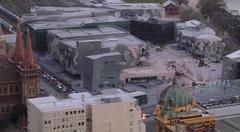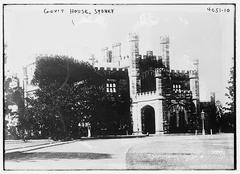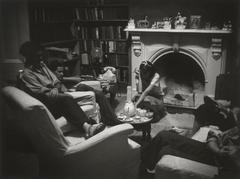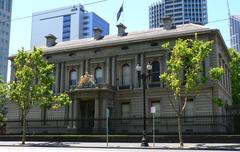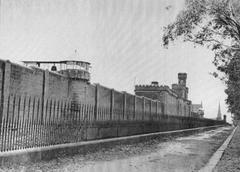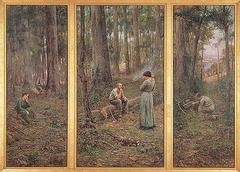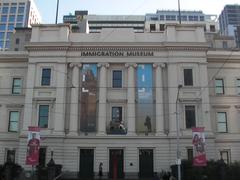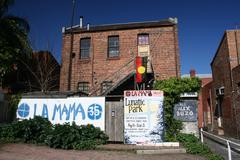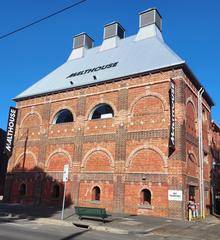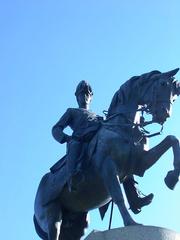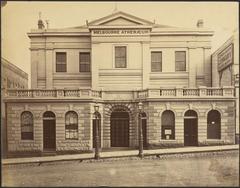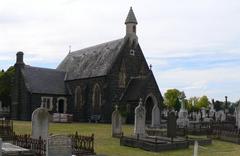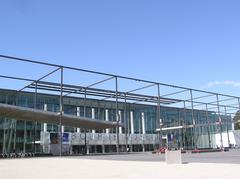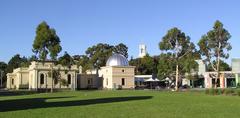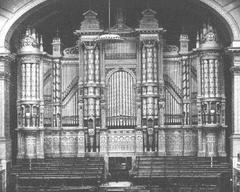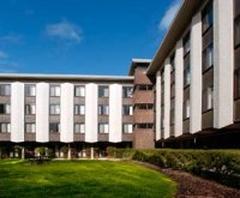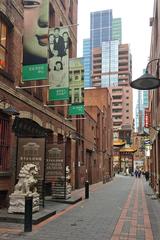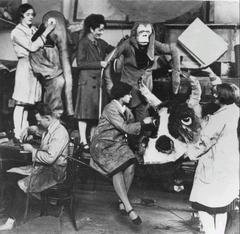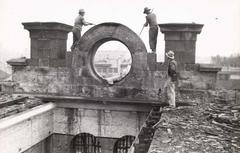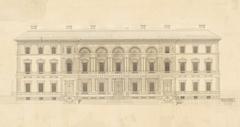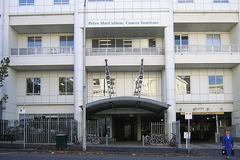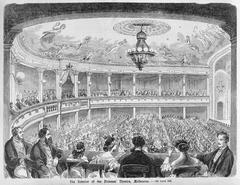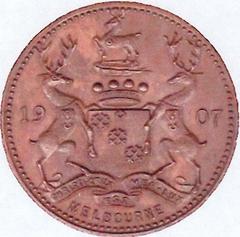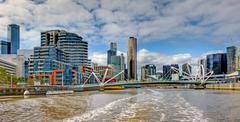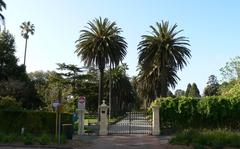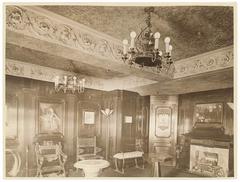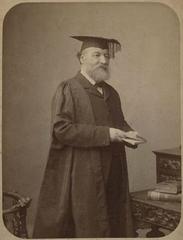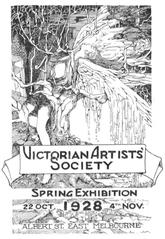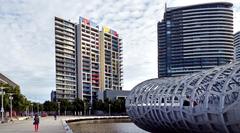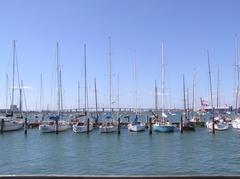
Kew Asylum Visiting Hours, Tickets, and Melbourne Historical Sites Guide
Date: 04/07/2025
Introduction to Kew Asylum: Melbourne’s Mental Health Heritage
Nestled in the leafy suburb of Kew, the former Kew Asylum—later known as Willsmere Psychiatric Hospital—remains a striking monument to the evolution of mental health care in Victoria, Australia. Established in the mid-19th century amid rapid colonial expansion, Kew Asylum was conceived as a progressive institution dedicated to the care of those experiencing mental illness and intellectual disabilities. Its grand Italianate and French Second Empire architecture, set within landscaped therapeutic grounds, symbolized contemporary ideals of humane treatment and social optimism (eMelbourne; Willsmere History).
Operating from 1872 until its closure in 1988, Kew Asylum bore witness to the complexities and transformations of mental health care. Chronic overcrowding, public scrutiny, and evolving social perspectives shaped its challenging legacy, encapsulating the broader story of stigma, reform, and advocacy in Australian mental health history (ASAP Archives; UNSW Newsroom).
Today, the site is a sensitively redeveloped residential complex, but its preserved heritage-listed structures and gardens invite visitors to engage with Melbourne’s past. While interior access is limited, guided tours and interpretive displays allow for a deeper understanding of the asylum’s architecture, patient experiences, and its pivotal role in mental health care reform (Willsmere official site; Museums Victoria).
This guide provides everything prospective visitors need: visiting hours, ticketing, accessibility tips, travel advice, and insights into Kew Asylum’s enduring significance. Whether you are a history aficionado, an architecture enthusiast, or a culturally curious traveler, exploring Willsmere offers a profound encounter with Melbourne’s mental health heritage and ongoing dialogue about compassionate care.
Table of Contents
- Origins and Construction of Kew Asylum
- Early Operations and Overcrowding
- Living Conditions and Institutional Critique
- Expansion and the Kew Cottages
- Institutional Evolution and Name Changes
- Decline, Closure, and Heritage Preservation
- Visitor Information: Visiting Hours, Tickets & Tours
- Legacy and Cultural Significance
- Visiting Kew Asylum: Practical Guide
- The Role of Kew Asylum in Victorian Society
- Architectural and Landscape Heritage
- Community Memory and Heritage Preservation
- Representation in Public Discourse and the Arts
- Contemporary Significance and Lessons
- Numbers and Facts at a Glance
- Enhance Your Visit with Multimedia
- Explore More Melbourne Historical Sites
- Discover Willsmere (Kew Asylum): Landmark Guide
- Location and Access
- Travel Tips: Getting There
- Tours and Museum Experience
- Heritage Features and Points of Interest
- Accessibility Information
- Visitor Etiquette
- Special Events and Themed Tours
- FAQs and Visitor Tips
- Safety and Security
- Additional Resources
- Heritage Preservation and Societal Impact
- Responsible Tourism and Advocacy
- Summary and Key Visiting Information
- References and Further Reading
Origins and Construction of Kew Asylum
Kew Asylum’s origins date to 1856, when plans for a new mental health facility were drawn up to address the growing demand in a rapidly expanding Melbourne. Delays and political controversies postponed its completion until 1871, and it was officially recognized in 1872 (eMelbourne). The building’s grand design, by architects G.W. Vivian and Frederick Kawerau, reflected a commitment to both containment and therapeutic ideals, accommodating up to 600 patients in an imposing structure visible across the city.
Early Operations and Overcrowding
Almost immediately after opening, Kew Asylum became overcrowded. By 1873, resident numbers exceeded capacity, often surpassing 1,000 patients—well over the intended limit (eMelbourne). This situation reflected broader social issues, including a lack of alternative care and persistent stigma surrounding mental illness. The facility, built as a replacement for Yarra Bend Asylum, ended up operating in parallel with it due to ongoing demand.
Living Conditions and Institutional Critique
Public concern about Kew Asylum’s internal conditions grew rapidly. A 1876 inquiry revealed inadequate water supply, insufficient amenities, and reports of brutality by attendants. The difference between the institution’s dignified exterior and the grim realities inside became widely recognized (eMelbourne).
Expansion and the Kew Cottages
To address overcrowding and diverse patient needs, the complex was expanded in 1887 with the addition of detached “Kew Cottages” for children and young adults with intellectual disabilities (eMelbourne). Despite this, the main building suffered from neglect and limited modernization.
Institutional Evolution and Name Changes
Reflecting evolving attitudes, the asylum underwent several name changes: Hospital for the Insane (1903), Mental Hospital (1930s), and finally Willsmere Psychiatric Hospital (1960). However, many challenges—overcrowding, underfunding, public criticism—persisted throughout its history (eMelbourne).
Decline, Closure, and Heritage Preservation
By the late 20th century, reforms in mental health care led to deinstitutionalization and the closure of large asylums like Kew. The site was decommissioned in 1988. Redeveloped for residential use, the original building envelope and gardens were preserved and listed by the National Trust, though the broader landscape context has changed (eMelbourne).
Visitor Information: Kew Asylum Visiting Hours, Tickets & Tours
Today, the exterior of Willsmere is accessible to visitors interested in Melbourne’s history. Interior access is restricted, but the grounds and exterior architecture are available for exploration.
- Visiting Hours: Public access to the exterior is generally available during daylight hours (8 AM–6 PM). Please respect private property and observe signage.
- Tickets: No ticket is required for the grounds. Tickets for guided walking tours (which include the asylum exterior) are available through local providers.
- Accessibility: Public transport (tram and bus) serves the area. The site is moderately hilly; wheelchair access may be limited in certain areas.
- Guided Tours: No interior tours are available, but heritage and ghost tours sometimes include the exterior. Book in advance with local operators.
- Nearby Attractions: Yarra Bend Park, Old Melbourne Gaol, and Melbourne Museum are located nearby.
Frequently Asked Questions (FAQ)
Q: Can I visit inside Kew Asylum?
A: No, the interior is private property. The exterior and grounds are accessible.
Q: Are there tours that include Kew Asylum?
A: Yes, some heritage and ghost tours include the exterior. Check with local providers.
Q: What are the best times to visit?
A: Daylight hours are best for safety and photography; spring and autumn have pleasant weather.
Q: Is the site accessible by public transport?
A: Yes, with nearby tram and bus stops.
Q: Are there entry fees?
A: No fee for the grounds; guided tour prices vary.
Legacy and Cultural Significance
Kew Asylum was the largest mental hospital in Victoria and a central site in the development of mental health care. Its history reflects shifts in social attitude, public policy, and the treatment of people with mental illness and intellectual disabilities. Today, its preserved elements serve as a reminder of both progress and the need for ongoing reform (eMelbourne).
Visiting Kew Asylum: Hours, Tickets, and the Rich History of Melbourne’s Historic Mental Health Site
Practical Guide
- Visiting Hours: Museum and grounds open Tuesday–Sunday, 10:00 AM–4:00 PM (on select public open days and events). Guided tours typically weekends at 11:00 AM and 2:00 PM.
- Tickets: $12 adults, $8 concession, free for children under 12. Book online for group rates and special events.
- Accessibility: Wheelchair accessible in most areas; accessible restrooms available.
- Getting There: 100 Willsmere Road, Kew. Tram route 48 and local buses connect to the CBD.
- Special Events: Seasonal exhibitions and educational programs. Check the official website for details.
The Role of Kew Asylum in Victorian Society
Symbol of Colonial Optimism
Kew Asylum’s grand design and landscaped grounds reflected a colonial vision of humane treatment and optimism, distinct from the punitive institutions of the past (Willsmere History).
Social Attitudes and Segregation
In the 19th and early 20th centuries, asylums were tools for segregating people labeled “lunatics” or “idiots,” reinforcing stigma and exclusion (Willsmere History).
Gender, Class, and Reform
Women were especially vulnerable to institutionalization for behavior deemed inappropriate. Investigations, such as Catherine Hay Thomson’s in 1886, led to reforms like appointing female medical staff (UNSW Newsroom).
Public Scrutiny and Advocacy
Kew was the focus of public inquiries, including a major Royal Commission in 1886, and reforms in the 1950s and 1980s shifted care away from custodial institutions (Willsmere History; ASAP Archives).
Patient and Family Impact
The institution was both a place of refuge and profound separation, with oral histories documenting the complex realities faced by patients and families (UNSW Newsroom).
Architectural and Landscape Heritage
The asylum’s architecture and therapeutic gardens embodied 19th-century ideals of healing through environment. Features like low “ha-ha” walls and rare trees remain integral to the site’s character (Willsmere History).
Community Memory and Heritage Preservation
Following closure, Willsmere was redeveloped with heritage protections. The museum and interpretive displays foster community engagement and reflection on the evolution of mental health care (ASAP Archives).
Representation in Public Discourse and the Arts
Kew Asylum has inspired exhibitions, research, and creative works exploring confinement, reform, and social justice (Kew Historical Society).
Contemporary Significance and Lessons
Willsmere’s transformation from an institution of segregation to a heritage site reflects broader changes in mental health policy and the importance of ongoing advocacy (Willsmere History; ASAP Archives).
Numbers and Facts at a Glance
- Operational Years: 1871–1988 (Willsmere History)
- Scale: Among Australia’s largest asylums, with male and female wings (Willsmere History)
- Royal Commissions: Major inquiry in 1886 (UNSW Newsroom)
- Heritage Status: Listed on the National Estate since 1978 (Willsmere History)
- Current Use: Residential complex with museum and displays (ASAP Archives)
Enhance Your Visit with Multimedia
Interactive virtual tours, historical photo galleries, and on-site QR-coded audio guides are available via the official Kew Asylum website.
Explore More: Related Melbourne Historical Sites
Discover Willsmere (Kew Asylum): Melbourne’s Historic Landmark
Location and Access
Willsmere is located at 1 Wiltshire Drive, Kew VIC 3101, with access via Yarra Boulevard (Willsmere official site). Use Google Maps for directions. Entry through Hutchison Drive (Gate 6) is for residents only.
Travel Tips
- Car: Visitor parking at Wiltshire Drive; intercom entry at Gates 1 and 6.
- Public Transport: Tram on High Street (20-minute walk) and buses along Barkers Road.
Visiting Hours and Tickets
- Open Days/Tours: Available during heritage events (e.g., Open House Melbourne). Dates and times vary.
- Tickets: $20–$40 depending on event; book online (Open House Melbourne event).
- Booking: Advance booking required.
Tours and Museum Experience
- Guided Tours: Led by heritage experts, exploring architecture, wards, gardens, and museum.
- Self-Guided Tours: Available during special events (Self-Guided Tour PDF).
- Museum: Displays artifacts, photos, and documents.
Heritage Features and Points of Interest
Architectural highlights include the administration block’s mansard roof, male and female wings, bluestone cells, ha-ha walls, and landscaped gardens (Heritage Victoria; Wikipedia).
Accessibility Information
- Ground-floor areas are wheelchair accessible; upper floors require stairs.
- Contact organizers for specific needs (Willsmere visitor info).
Visitor Etiquette
- Stay with your tour group; respect private residences.
- Photography permitted in heritage areas (check with guide).
Special Events and Themed Tours
- Ghost Tours: Explore paranormal legends (Ghost Tours article).
- Heritage Walks: Focus on gardens and landscapes.
- Historical Lectures: Led by experts.
Check Willsmere events and Open House Melbourne for details.
Frequently Asked Questions (FAQ)
Q: Are daily visits allowed?
A: No, only during scheduled tours/events.
Q: How do I buy tickets?
A: Book online via event organizers.
Q: Is Willsmere accessible for wheelchair users?
A: Some ground-floor areas are; upper floors may not be.
Q: Can I bring children?
A: Yes, but supervise them at all times.
Q: Is photography allowed?
A: Generally yes; confirm with your guide.
What to Bring and Expect
- Comfortable shoes
- Weather-appropriate clothing
- Respect for the site’s history
Safety and Security
- Follow guide instructions; remain with your group
- Restricted areas are off-limits
Additional Resources
Heritage Preservation and Societal Impact
Willsmere’s preservation is not only architectural but also educational, encouraging reflection on mental health care’s evolution (Museums Victoria).
Responsible Tourism and Advocacy
Visitors are encouraged to engage thoughtfully, honoring the experiences of former patients and respecting current residents.
Summary: Key Information and Visiting Tips
Kew Asylum/Willsmere remains a powerful symbol of mental health care transformation in Melbourne. Its preserved architecture, gardens, and guided experiences offer education and reflection for all visitors. Plan ahead, respect the residential community, and use official digital resources to enrich your visit. Download the Audiala app for curated tours and stay engaged with Melbourne’s heritage (Willsmere official site; Open House Melbourne).
References and Further Reading
- Kew Asylum, 2023, eMelbourne
- Willsmere History, 2024, Willsmere Official Site
- Kew Asylum Archives, 1997, ASAP Archives
- Hidden Women of History, 2020, UNSW Newsroom
- Museums Victoria Collection, 2024, Museums Victoria
- Willsmere Visitors Information, 2024, Willsmere Official Site
- Open House Melbourne, 2024, Open House Melbourne
For the latest updates, guided tours, and expert insights, download the Audiala app and follow us on social media.
























